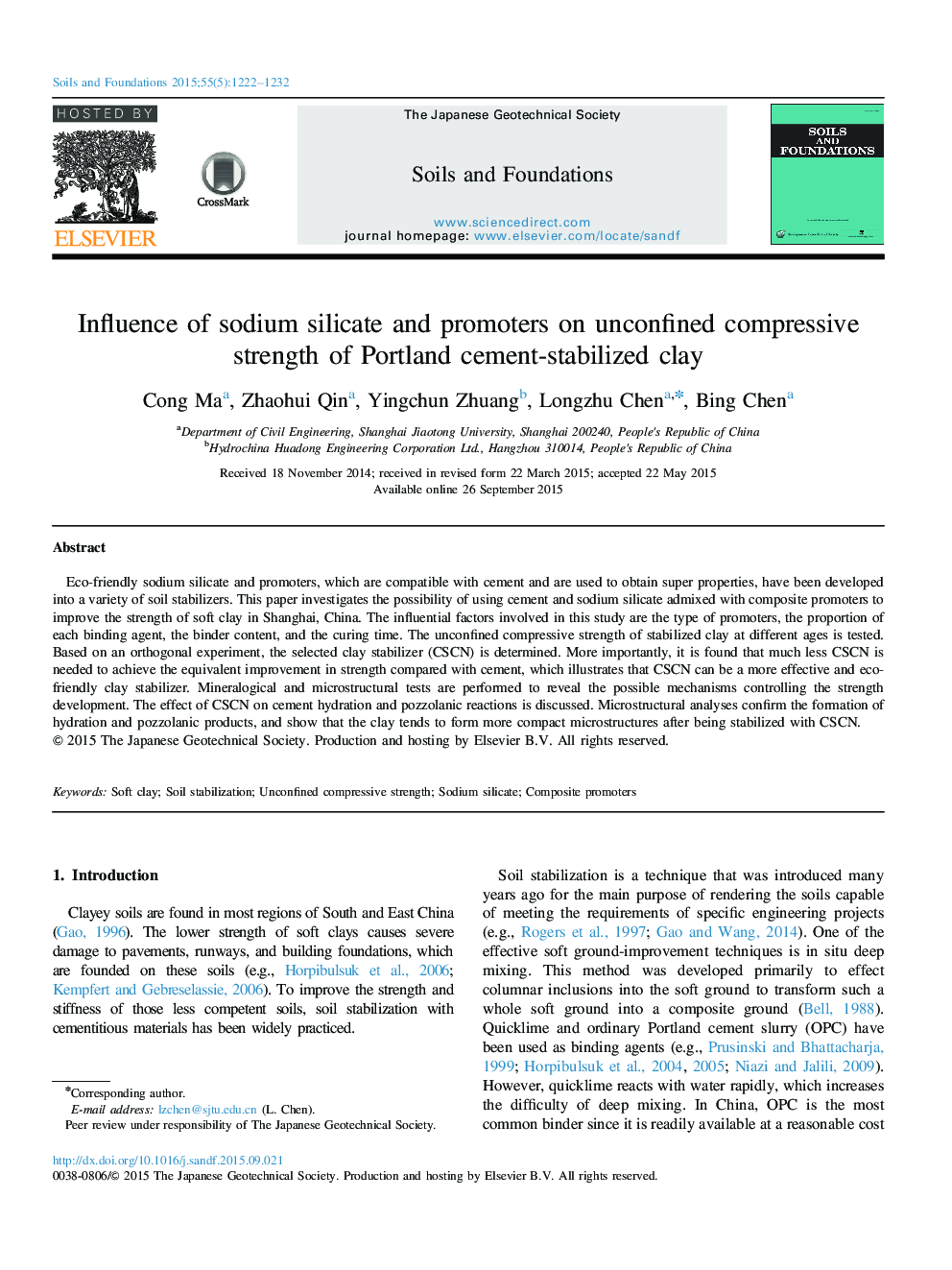| Article ID | Journal | Published Year | Pages | File Type |
|---|---|---|---|---|
| 307101 | Soils and Foundations | 2015 | 11 Pages |
Abstract
Eco-friendly sodium silicate and promoters, which are compatible with cement and are used to obtain super properties, have been developed into a variety of soil stabilizers. This paper investigates the possibility of using cement and sodium silicate admixed with composite promoters to improve the strength of soft clay in Shanghai, China. The influential factors involved in this study are the type of promoters, the proportion of each binding agent, the binder content, and the curing time. The unconfined compressive strength of stabilized clay at different ages is tested. Based on an orthogonal experiment, the selected clay stabilizer (CSCN) is determined. More importantly, it is found that much less CSCN is needed to achieve the equivalent improvement in strength compared with cement, which illustrates that CSCN can be a more effective and eco-friendly clay stabilizer. Mineralogical and microstructural tests are performed to reveal the possible mechanisms controlling the strength development. The effect of CSCN on cement hydration and pozzolanic reactions is discussed. Microstructural analyses confirm the formation of hydration and pozzolanic products, and show that the clay tends to form more compact microstructures after being stabilized with CSCN.
Related Topics
Physical Sciences and Engineering
Earth and Planetary Sciences
Geotechnical Engineering and Engineering Geology
Authors
Cong Ma, Zhaohui Qin, Yingchun Zhuang, Longzhu Chen, Bing Chen,
